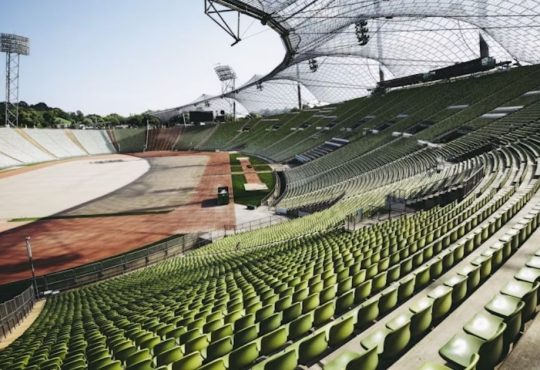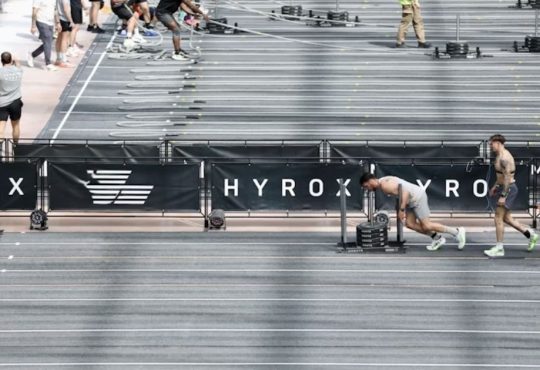2025 has become a landmark year for women’s sports—a moment in history when everything shifted. What was once underfunded, underpromoted, and underestimated has now become headline-worthy, high-grossing, and heavily followed. Across every major sport—from basketball and soccer to motorsports and combat sports—women are not only holding their own but setting new standards of excellence and influence. This year, the story is clear: women’s sports are not an afterthought. They’re a cultural powerhouse.
The sports rise of women’s athletics hasn’t happened overnight—it’s been decades in the making. Fueled by grassroots advocacy, unwavering grit, social media savvy, and undeniable talent, this movement has steadily gained momentum. But 2025 marks a turning point. This is the year the world didn’t just watch—it tuned in, invested, and roared with support. Here’s a closer look at the most compelling moments behind this evolution and why women’s sports are finally earning the global recognition they’ve long deserved.
Historic Records and Unforgettable Moments
One thing’s certain—2025 isn’t just a good year for women’s sports. It’s been been a year that’s completely rewritten the playbook on’s completely rewritten the playbook on what’s possible. From buzzer-beaters to historic attendance milestones, this year has delivered moments so powerful, you’ll be bragging about them to your future grandkids like they were Olympic gold. These aren’t just wins on the scoreboard; they’re cultural milestones, the kind that shift conversations and shake up entire industries.
Basketball
The WNBA in 2025 has become a cultural juggernaut. With the arrival of rookie phenoms Caitlin Clark, Angel Reese, and Cameron Brink, the league has found itself in the midst of a golden era. What started as fierce college rivalries has transitioned seamlessly into the pros, fueling national hype and global buzz. These rising stars aren’t just loaded with talent—they’re bursting with charisma, brimming with confidence, and absolutely owning the spotlight.
Caitlin Clark’s WNBA debut wasn’t merely a game—it was a broadcast phenomenon, pulling in a jaw-dropping 1.6 million viewers and resetting the bar for regular-season viewership in league history. Meanwhile, Angel Reese has become a walking double-double and a cultural force, dazzling fans with her relentless energy and bold authenticity. The Las Vegas Aces and New York Liberty are filling arenas like it’s playoff season every night, while tickets to see Reese and the Chicago Sky at home have become the city’s most sought-after pass—more golden than front-row seats at a championship bout.
As a result, WNBA attendance has more than doubled year-over-year, and merchandise sales are through the roof. Social media clips of behind-the-back assists, logo threes, and full-court blocks rack up millions of views within hours. In 2025, the WNBA isn’t just surviving—it’s thriving and taking over.
Socce
The excitement from the 2023 Women’s World Cup hasn’t died down—in fact, it’s fueled a massive wave of enthusiasm and love for the women’s game. In Europe, the Women’s Super League in England and Liga F in Spain have both seen record-breaking attendance, while the National Women’s Soccer League in the U.S. is expanding rapidly, with two new teams launching in 2025 alone.
This year’s UEFA Women’s Champions League final in Barcelona was nothing short of a seismic moment for the sport. A staggering 95,743 fans packed into Camp Nou, marking the highest attendance for a women’s club match in history. And it wasn’t just the crowd—Alexia Putellas, returning from injury, scored a dramatic brace that sealed victory for FC Barcelona, solidifying her legend status.
Meanwhile, younger stars like Sophia Smith and Mary Fowler are fast becoming global icons, not just for their footwork but for their leadership and style. These women are changing the way fans talk about the sport—and they’re making sure little girls everywhere know there’s a future for them in football.
Tennis
Women’s tennis in 2025 is like a never-ending final set tiebreak—intense, unpredictable, and wildly entertaining. Iga Swiatek, Coco Gauff, and Aryna Sabalenka have become the new holy trinity of tennis, battling across continents and racking up titles like it’s their day job—which, to be fair, it absolutely is.
Coco Gauff’s 2025 Australian Open win wasn’t just a personal victory—it was a generational moment. She became the youngest woman to hold two different Grand Slam titles since Serena Williams, and her graceful, eloquent interviews have earned her a fan base that transcends sports.
Even more encouraging? The equal pay movement is finally gaining ground beyond just the Grand Slam stage, reaching deeper into the broader world of sports. Mid-tier and Challenger events are starting to adopt parity policies, a move driven in part by pressure from top-ranked female players and massive public support. And with streaming platforms giving fans direct access to lesser-known matches, the depth of women’s tennis is finally being seen—and celebrated—on a global scale.
Combat and Motorsports
Once considered niche or novelty in women’s sports, combat sports and motorsports are now commanding main-event status—and proving that women don’t just belong, they dominate.
In boxing, Katie Taylor once again headlined Madison Square Garden—her second time in three years—and drew an even bigger crowd than her male counterparts that same month. Her showdown with Amanda Serrano was dubbed Fight of the Year by nearly every major outlet, and her technical skill and endurance made it impossible to deny her legacy.
In MMA, Valentina Shevchenko passed the torch to a new wave of fighters like Manon Fiorot and Erin Blanchfield, whose bouts continue to headline UFC cards with rising pay-per-view numbers.
Over in motorsports, Jamie Chadwick and Abbi Pulling have helped catapult the all-female F1 Academy into serious contention as a feeder series for Formula 1. In fact, 2025 marked the first time an F1 Academy driver secured a reserve seat on a Formula 1 team—Chadwick with Williams Racing—blurring the lines between once-separated gender divisions and proving raw speed knows no gender.
These historic moments aren’t just highlights—they’re turning points. The kind that changes perceptions, rewrites contracts, and opens doors that once seemed sealed shut. In 2025, women’s sports aren’t asking for a seat at the table anymore.
They’ve built their stadium.
The Power of Visibility and Social Media
Let’s be real—TikTok, Instagram, and YouTube have done more for women’s sports than some TV networks ever did.
Today’s female athletes aren’t just excelling in their sport—they’re also crafting influential digital empires and redefining what it means to be a modern sports icon. Whether it’s Caitlin Clark casually dropping threes in practice videos, Simone Biles doing gravity-defying flips, or Naomi Osaka sharing her mental health journey, these athletes are letting fans in—and fans are sticking around.
Social media has bridged the gap between athlete and audience, allowing women to bypass traditional media gatekeeping and create communities, brand deals, and movements. Paige Bueckers and Livvy Dunne, for instance, have made millions while in college through NIL (Name, Image, and Likeness) deals—once unheard of for female athletes. Now? It’s expected.
Money Talks—and It’s Finally Getting Louder
The old argument that “women’s sports don’t sell” is now completely shattered. In 2025, we’re seeing real money flow in.
- Sponsorships: Major brands like Nike, Adidas, Gatorade, and even luxury houses like Louis Vuitton are investing in female athletes at a rate never seen before. Multi-year deals and collaborations are becoming the norm, not the exception.
- Media Rights: Giants like Disney, ESPN, Amazon Prime, and Netflix are all in a high-stakes race for broadcasting deals and exclusive docuseries contracts. ESPN’s “Full Court Press,” which followed Clark, Bueckers, and Reese during their final college seasons, had millions hooked and sparked new demand for behind-the-scenes storytelling.
- Merchandise and Ticket Sales: WNBA jersey sales have tripled. Clubs in the NWSL and Women’s Super League (WSL) are watching their merchandise fly off the shelves, with fans snapping up jerseys, scarves, and gear at a record pace. And fans aren’t just watching from home—they’re showing up and filling seats.
Barriers Still Exist, but the Breakthroughs Are Big
Despite the overwhelming progress in women’s sports, the path forward is still paved with challenges. While 2025 has delivered landmark moments, increased visibility, and record-setting deals, many barriers continue to limit the full potential of female athletes. Equal pay remains one of the most glaring issues. In many sports, women still earn a fraction of what their male counterparts receive, even when they outperform them in viewership or performance metrics. This pay gap extends beyond salaries to include prize money, endorsement opportunities, and appearance fees.
Facility access is another pressing concern. In several countries and even in well-established leagues, women are still training in substandard conditions compared to men. Access to top-tier medical staff, strength and conditioning facilities, and recovery tools is often unequal, putting female athletes at a disadvantage. Additionally, some leagues struggle to secure consistent media coverage or primetime broadcasting slots. Despite a growing audience, women’s games are often pushed to less favorable time slots or hidden behind paywalls, making it difficult for fans to follow their favorite teams consistently. These obstacles reflect a lingering cultural bias that still exists in parts of the sports world.
Yet, despite the ongoing challenges, the progress unfolding alongside them is impossible to overlook. Among the most impactful shifts in recent years is the powerful rise of athlete activism. Female athletes are no longer waiting for permission to speak out—they are taking control of the narrative. They are using their platforms to advocate for issues that go far beyond the game itself. Mental health awareness, reproductive rights, racial justice, and the inclusion of transgender athletes have become key causes championed by some of the most visible figures in sports. Athletes like Naomi Osaka, Megan Rapinoe, Simone Biles, and countless others are redefining what it means to be a professional athlete in the modern era.
These women are not just stars on the field or court. They are leaders, mentors, and cultural influencers. They are showing younger generations that strength is not just measured by speed or skill but also by the courage to speak up and stand firm. While systemic change takes time, the momentum of 2025 suggests that women in sports are no longer willing to accept less. The barriers still exist, but the breakthroughs are getting bigger, louder, and harder to ignore. This shift is not just progress—it is a powerful movement that continues to reshape the future of sports for everyone.
Sports Rise: The Next Generation Is Watching—and Ready
Perhaps the most beautiful thing about the rise of women’s sports in 2025 is this: young girls now grow up seeing themselves in athletes who look like them, talk like them, and dream like them. Schools are investing more in girls’ programs. Communities are building support systems that don’t just aim for “participation trophies” but cultivate champions.
Female athletes today are no longer pioneers—they’re powerhouses. And the next wave? They’re coming in hot, inspired, and unstoppable.
The Future of Sports Has Arrived
The rise of women’s sports in 2025 marks a pivotal cultural shift, transforming from headlines into a full-scale movement. Legends are being shaped in real time, redefining the standards of athletic excellence, influence, and compensation.
From packed stadiums and viral game-winners to major endorsement deals and widespread cultural impact, women’s sports have firmly claimed the spotlight—and are set to remain there. No longer a passing trend, this moment signals a lasting revolution. In 2025, the global stage is aligned with the momentum.





